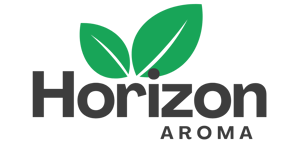From Farm to Bottle: The Journey of Essential Oils
ESSENTIAL OILS 101
1/7/20252 min read


Have you ever wondered what it takes to produce a bottle of pure essential oil? The journey from farm to bottle is a fascinating and meticulous process that ensures the quality and potency of each drop. Let’s explore the steps involved in creating these natural wonders.
1. Cultivation: Where It All Begins
The journey starts with carefully selected farms where aromatic plants are cultivated. From lavender fields in France to tea tree plantations in Australia, the location and climate play a crucial role in determining the quality of the essential oil.
Key Factors:
Soil quality
Weather conditions
Organic and sustainable farming practices
2. Harvesting: Timing Is Everything
Harvesting plants at the right time is critical. For many plants, the essential oil content is at its peak during a specific stage of growth or time of day. Farmers rely on their expertise to ensure the plants are harvested when they are most aromatic and nutrient-rich.
3. Extraction: Turning Plants into Oils
The next step is extracting the oil from the plant material. This is done through various methods, depending on the plant type:
Steam Distillation: The most common method, where steam is used to extract the oil.
Cold Pressing: Typically used for citrus oils, where the oil is pressed from the rind.
Solvent Extraction: Used for delicate flowers like jasmine, which require a gentler approach.
Each method ensures that the oil retains its natural properties and purity.
4. Quality Testing: Ensuring Purity and Potency
After extraction, the essential oil undergoes rigorous quality testing. This includes:
GC-MS Testing: Identifies the chemical composition and ensures there are no contaminants.
Organoleptic Testing: Experts evaluate the aroma, color, and consistency of the oil.
These tests ensure that only the highest-quality oils make it to the next stage.
5. Bottling: Preserving the Essence
Once the oil passes quality tests, it is carefully bottled to preserve its properties. Dark glass bottles are commonly used to protect the oil from light and heat, which can degrade its potency.
Packaging Considerations:
Airtight seals to prevent oxidation
Proper labeling with origin, extraction method, and certification details
6. Distribution: Reaching Global Markets
The final step is distributing the bottled essential oils to businesses and consumers worldwide. Whether it’s a small wellness brand or a large cosmetics company, these oils are ready to enhance products and lives.
Why This Process Matters
Understanding the journey from farm to bottle highlights the craftsmanship and care behind each essential oil. For businesses, it’s a reminder of the importance of sourcing oils from reputable suppliers who prioritize quality and sustainability.
By choosing high-quality essential oils, you’re not just investing in a product—you’re supporting the farmers, distillers, and experts who bring these natural treasures to life.
Have questions about our process or how we source our essential oils? Get in touch with us to learn more!



